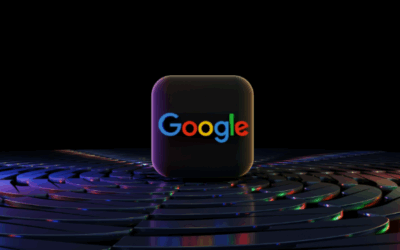Black Friday marketing can make or break your holiday sales. Many small businesses miss key chances because their email campaigns and website aren't ready for the rush. This post breaks down simple marketing tips, like timing urgency-driven offers and boosting social...
How Subject Lines and Personalization Can Skyrocket Your Email Engagement

Categories
You may also like…
How Google AI Overviews Affect Website Traffic and User Behavior
Google AI Overviews are changing how people find information online. If you rely on website traffic or SEO strategies, this shift could affect your results more than you expect. This post breaks down what these AI-generated summaries mean for search visibility and...
15 Proven Strategies to Build an Effective Email List from Scratch: A Beginner’s Guide
Most email lists start with zero subscribers and quiet inboxes. Growing your list can feel like shouting into the void, especially when you don't know where to begin. This beginner's guide to email marketing breaks down 15 clear strategies like using lead magnets,...
Most emails never get opened. You spend hours crafting messages that land ignored or deleted. Simple changes in your email subject lines and personalization can boost open rates and increase click rates significantly. This post breaks down key email marketing techniques to improve email engagement and shows how to apply them step-by-step in your next campaign.
Crafting Compelling Subject Lines
Your subject line is the gateway to your email. It’s the first impression you make and often determines whether your email gets opened or sent straight to trash.
Emotional Triggers in Subject Lines
Fear, curiosity, and excitement drive people to action. When you tap into these emotions with your subject lines, open rates jump dramatically.
“You’re missing out on 75% more sales” triggers fear of loss much more effectively than “Increase your sales potential.” People hate missing opportunities more than they enjoy gaining benefits.
Curiosity gaps work magic too. “The weird trick that doubled our conversion rate” makes readers want to know what that trick is. But don’t overdo it – if your subject line feels like clickbait, trust erodes fast.
Try this simple test: Would your subject line make YOU stop scrolling through 50+ new emails? If not, rewrite it with a stronger emotional hook.
Power of Action-Oriented Language
Passive subject lines create passive readers. Action verbs command attention and prompt immediate response.
Compare “April Newsletter” to “Grab these 5 April deals before Friday.” The second creates urgency and gives a clear reason to open now.
Start with strong verbs like “Grab,” “Discover,” “Save,” or “Join.” Follow with specific benefits or time constraints that push readers to act.
The best action-oriented subject lines combine a command with a clear benefit: “Cut your workload in half with these 3 email templates.” This tells readers exactly what they’ll gain by opening.
Keep it short – most mobile devices show only 30-40 characters. Front-load the most important words so they don’t get cut off.
Personalization Tactics for Engagement
Email personalization goes far beyond adding first names. The most successful emails feel tailor-made for each recipient.
Dynamic Content and User Data
Smart personalization uses what you know about subscribers to create relevant messages. This boosts click rates by up to 300% compared to generic content.
Basic personalization starts with names: “John, your order is ready” feels more urgent than “Your order is ready.” But the real magic happens when you use behavioral data.
Show products similar to past purchases. Reference their browsing history. Mention their location when relevant: “New yoga studios near Portland” works better than generic “New yoga studios opening.”
The key is making content feel custom-created. A clothing retailer might show women’s items to female subscribers and men’s items to male subscribers automatically. This simple targeting makes emails feel personally curated.
Personalized Offers and Recommendations
People respond to offers that match their needs. Generic discounts can’t compare to personalized recommendations based on past behavior.
Birthday offers see open rates 3-5 times higher than standard promotional emails. Why? They feel special and timely, not mass-produced.
Segment your offers based on purchase history. Someone who bought running shoes might want running shorts next – not dress shoes. This targeted approach makes your emails feel helpful rather than pushy.
Keep track of which links each subscriber clicks. If they always open emails about a specific topic, send more content on that topic. This makes subscribers feel understood rather than just marketed to.
Effective Email Segmentation Techniques

Mass emails get mass-ignored. Dividing your list into specific groups lets you send targeted messages that resonate with each segment.
Behavioral and Demographic Segmentation
People who act differently should receive different emails. Segmentation based on actions and traits creates messages that feel personally relevant.
Behavioral segments might include: active users vs. dormant subscribers, big spenders vs. occasional buyers, or blog readers vs. product page visitors. Each group has different needs and interests.
For example, send re-engagement campaigns to subscribers who haven’t opened emails in 60+ days. These might offer special “we miss you” discounts that active subscribers don’t receive.
Demographic segments like age, location, or job title help tailor your message tone and content. A 25-year-old marketing assistant needs different information than a 55-year-old CMO, even if both work in marketing.
The goal isn’t creating dozens of complex segments. Start with 3-5 key groups that show meaningful differences in how they interact with your brand.
Creating Targeted Email Lists
Smart list building focuses on quality over quantity. A small, engaged list beats a massive list of uninterested subscribers every time.
Start by asking the right questions on your sign-up forms. Beyond email address, what 1-2 pieces of information would help you send better content? Perhaps industry, interests, or goals.
Clean your lists regularly. Remove hard bounces immediately and consider removing subscribers who haven’t engaged in 6-12 months. This improves deliverability for everyone else on your list.
Create separate lists for different purposes. Your weekly newsletter subscribers might want different content than your product update list. Giving people choices about what they receive reduces unsubscribes.
The most valuable lists come from building an effective email list from scratch with clear purpose and permission. Quality subscribers who actually want your emails will always outperform purchased or scraped lists.
Timing Strategies to Boost Open Rates
When you send matters as much as what you send. Perfect timing can double open rates for the exact same email content.
Finding Optimal Send Times
The “perfect” send time varies by audience and industry. Testing reveals when your specific subscribers are most likely to engage.
For B2B emails, Tuesday through Thursday between 10am-2pm typically performs best. People are at work but not in early morning meetings or end-of-day rushes.
For B2C emails, evenings and weekends often work better when people have free time. Test sending emails between 7-9pm when many check personal email after dinner.
Your data tells the true story. Most email platforms show open times for past campaigns. Look for patterns in when your audience engages most, then schedule future emails during those windows.
Remember time zones if your list spans different regions. Some platforms automatically adjust send times based on each recipient’s time zone – a feature worth using.
Frequency and Cadence Balance
Sending too often annoys subscribers. Sending too rarely makes them forget you. Finding the right balance keeps engagement high without burning out your list.
Most businesses find success with 1-4 emails per month. More than weekly can feel overwhelming unless subscribers specifically request daily updates.
Create a consistent pattern subscribers can expect. Whether it’s “every Tuesday” or “first Monday of the month,” predictable timing builds anticipation.
Mix up your email types to maintain interest. Educational content, promotions, and announcements should rotate rather than sending the same type repeatedly.
Pay attention to unsubscribe spikes. If they jump after specific campaigns, you might be sending too frequently or missing the mark on content relevance.
Design Optimization for Higher Click Rates

Beautiful emails that don’t convert are useless. Effective design guides readers toward clicking your call-to-action.
Mobile-Responsive Email Design
Over 60% of email opens happen on mobile devices. If your emails look broken on phones, you’re losing most of your audience.
Single-column layouts work best on small screens. Multiple columns force mobile users to zoom and scroll horizontally – most won’t bother.
Use large, finger-friendly buttons for all clickable elements. Tiny text links get missed or mis-clicked on touchscreens.
Test your emails on actual phones before sending. What looks perfect on your desktop might be unreadable on mobile. Most email platforms offer mobile previews.
Keep your email width under 600px to ensure it displays properly across devices. Wider emails get cut off or require horizontal scrolling.
Font size matters too – nothing smaller than 14px for body text and 22px for headlines ensures readability without zooming.
Call-to-Action Placement and Style
The perfect call-to-action (CTA) stands out visually and tells readers exactly what to do next.
Place your primary CTA “above the fold” so readers see it without scrolling. Then repeat it at the end for those who read the full email.
Use button colors that contrast with your email background. Red, orange, and green buttons typically outperform subtle colors that blend in.
Keep button text short and action-oriented: “Get Your Free Trial” works better than “Click here to learn more about starting your free trial today.”
Limit each email to one main CTA. Multiple competing actions confuse readers and lower overall click rates. Secondary links can exist, but make one action clearly primary.
Create urgency with time-limited CTAs when appropriate: “Save 20% (Expires Tonight)” drives immediate action better than open-ended offers.
The best email subject lines promise something specific, and your CTA delivers on that promise. This alignment between subject and action creates a natural progression that boosts clicks.
Email marketing success comes from constant testing and refinement. What works for one audience might fail with another. The techniques in this guide give you a starting point, but your own campaign data will reveal what resonates most with your specific subscribers.
Start by implementing one change at a time. Track your results. Then build on what works. With each campaign, you’ll learn more about what makes your audience click – and that knowledge is the most powerful email marketing tool of all.



